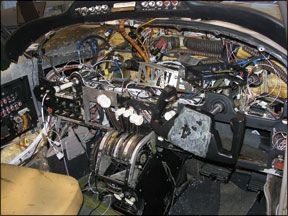Given the slide in the value of used aircraft, there are some real deals on the market these days, But there are also some huge pitfalls and one of the most potentially expensive is underestimating the replacement cost of an autopilot system. Aviation Consumer avionics editor Larry Anglisano wrote about this in the March 2008 issue and I now wish Id read his advice earlier. In this article, Ill show an actual example of how an autopilot upgrade project can neutralize a good deal on a used airplane. My adventure began in early 2003 after the birth of our third child. We had outgrown our Bonanza and it was time to search for an airplane with more room and greater payload. Living northwest of Chicago, I wanted an airplane that I could comfortably fly across Lake Michigan and that meant a light twin. As I was about to learn the hard way, step number 1 in searching for an airplane should always consider the autopilot first, if your operations will require one.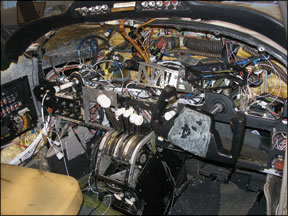
Low-Time 310
After a lengthy search, I found a low-time Cessna 310 G-model (1962) owned by a former radio celebrity in Denver. I flew out to Denver and spent the next week with the local Cessna dealer as they performed a thorough pre-buy inspection. I was focused on the airframe and engines and naively gave little consideration to the autopilot. I was aware that the panel was dated and ripe for an upgrade, but I believed I could readily bring the avionics-including the autopilot-into the 21st century.
My first experience with the existing Century II autopilot came on the flight home from Denver. Without a pitch mode, the Century did a fine job tracking the airways and I was able to trim the airplane to hold altitude with minimum manual effort.
While I expended a great deal of resources upgrading mechanical systems after I brought the airplane home, it wasnt long before avionics upgrades reached the top of my to-
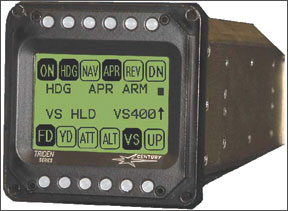
do list. At the time, UPSAT had just received FAA approval for the first GPS WAAS navigator and knowing Id be frequently flying IFR into my home airport where there are no precision approaches, the CNX80 became my first avionics purchase.
The CNX80s features were intuitive, largely mimicking the FMS and FMGS systems I was accustomed to at the airline where I worked. However, flying the CNX80 coupled to the pitchless Century II autopilot, particularly for VNAV or LPV approaches, seemed absurd. I knew the next logical step would require a significant commitment. For the next two months, I worked with both Mike Voltl, owner of Mobile Avionics and Jim Finefield, owner of Finefield Aviation at Lake in the Hills airport to formulate a plan for a major avionics upgrade to my 310.
Chelton had just introduced their revolutionary two-servo digital AP3C autopilot to the market. My decision to install this autopilot came after I saw it coupled to a CNX80 in Cheltons demo aircraft. With only two servos, rather than the conventional three, the AP3C autopilot was capable of smoothly flying an LPV or RNAV approach with CNX80 guidance. This was exactly the capability I was looking for.
The original panel was removed along with all the old wiring, hoses, switches and circuit breakers. With Jim Finefields help, the panel was crafted to mimic the jet aircraft style I was familiar with in the pre-EFIS Boeings I flew. Engine instruments were stacked in left/right columns just to the right of the standard T-layout for the flight instruments. Electronics International gauges and engine monitors helped preserve panel space and provided the layout I wanted.
The AP3C autopilot control panel fit nicely into the avionics stack just below the CNX-80. The refurbishment of the panel was remarkable, albeit with great effort by the installation team. The performance of the system was satisfactory after only some minor tweaks. Chelton provided good customer support before, during and after the installation. I was pleased with what we had accomplished and the AP3C performed well. Unfortunately, that wasnt the end of it. Not by a long stretch.
Chelton Exits
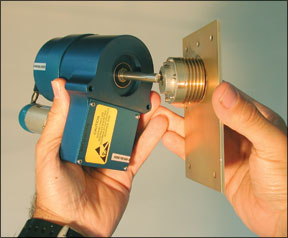
Just six months after we upgraded the panel and installed the AP3C autopilot system, I received a call from a representative at Wulfsberg Electronics, a Chelton sister company in the Cobham plc family. I was told that Chelton had exited the autopilot business and I was offered two choices: Either they would buy back the autopilot system I had just installed, fully reimbursing me for the components, the installation and the removal of the system, or I could choose to do nothing.
However, I was warned that future support for the system was “uncertain.” I was given 20 days to make a decision. In effect, I was offered only one logical choice. With the help of Mobile Avionics, we elected to remove the AP3C system and return it to Wulfsberg.
With the benefit of hindsight, its not difficult to connect the dots and understand what was going on in the GA autopilot business at that time. I suspect without coincidence that Cobham pulled the plug on its AP3C autopilot just months before acquiring S-TEC. After we removed the AP3C from my airplane, I could not find a single S-TEC dealer that would agree to install their system. S-TEC was in turmoil and their dealers werent happy.
Century Flight Systems had recently rolled out their first attempt at a fully digital autopilot, similar in capability to the AP3C which they called the Triden. I had met the president of Century at Oshkosh just a few months earlier and he raved about the new systems capability. However, when I inquired with sources inside the industry, I received discouraging reviews about the company.
While Century has been around for many years, ownership changed several years ago and the company is today but a small shadow of what it had once been in its OEM-supplier glory days. Factory support was consistently described by some of these sources as wanting. Unfortunately, the Bendix/King KFC autopilot line was not STCd for my airplane, S-TEC was still uncertain and so Century became my only choice. As any economist will tell you, a business that enjoys monopoly power is rarely good for the market.
The installation of the Century Triden autopilot included a new Century NSD1000 HSI, a new flight director gyro, the altitude pre-select system, a yaw damper and, to add panel space, a Garmin GTX33 remote transponder. The CNX80 was upgraded to a Garmin GNS480 and a Shadin fuel totalizer was added. On paper, this seemed to be another leap forward in avionics and autoflight capability, but the reality turned out to be sadly disappointing.
For the next two years the airplanes reliability fell to near zero. After we installed the Century system, I was unable to complete even one flight segment without a Century autopilot component failure. On one flight, the Triden controller unit internally burned while airborne, creating smoke in the cabin.
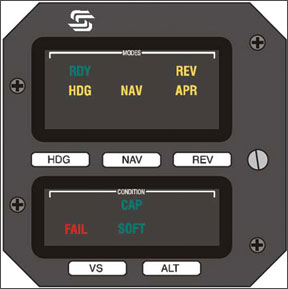
The Century attitude gyro tumbled in flight twice, including once in actual IFR conditions. For still undetermined reasons, the autopilot would initiate uncommanded rolls to the left and right up to 25-degrees. When the backlighting rheostat for the autopilot controller was turned up, the autopilot would command a sharp pitch up and when the rheostat was turned down, the aircraft would abruptly pitch down.
I found that communicating with Century and its repair technicians was difficult and this seems to discourage a feedback loop by which valuable information can be efficiently conveyed. Components were being shipped to and from their headquarters in Mineral Wells, Texas, weekly.
Test flight after test flight proved the system to be unreliable and unstable. There was a standing joke with my installation team that we should have installed the system with Velcro to make it easier to remove the components as they failed.
In an attempt to gain control of what was rapidly turning into an untenable situation, I arranged to take the airplane to Centurys headquarters at my own expense for a weeklong examination of the system. After I clearly demonstrated in a test flight the problems that continued to plague the system, Century was unable to pinpoint the cause. After a week of inaction, I flew home and made the painful decision to remove the Century autopilot and find yet a fourth autopilot for my airplane. I was hopeful I could find one that would not have a propensity to catch on fire in flight.
Round Three
Bruised, battered, but not yet beaten, Mobile Avionics patiently went about the process of removing the Century autopilot. At one point, I contemplated selling the airplane and giving up on general aviation entirely. Fortunately, by this time, Cobham plc, Cheltons parent company, had purchased S-TEC, providing much needed capital to refresh the brand and the companys image with dealers.
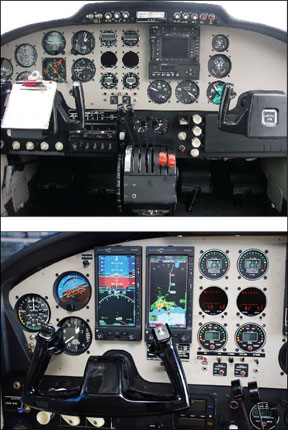
With new life now pumped back into S-TEC, several dealers I spoke with were once again recommending the S-TEC product. While S-TECs flagship 55X autopilot is not approved for my model 310, an STC exists for their Model 60-2 autopilot. Universally, dealers I spoke with recommended this solution and I gladly moved on from the Century debacle.
After the S-TEC 60-2 was installed, we began the final step in avionics upgrades, adding an Aspen Avionics EFD1000 Pro PFD and EFD1000 MFD, converting the remaining engine instruments to digital and replacing the EFB with a Garmin GPSmap 695.
Finally, I have an autopilot system in my 310 that performs nearly as well, if not better in most situations than any autoflight system Ive used. As with any system, there are compromises and human interface engineering design features, particularly on the older-design S-TEC 60-2, that leave room for improvement.
However, the integration of the Aspen system with a capable autopilot such as those offered by S-TEC provides a pilot with true state-of-the-art functionality. I am as comfortable flying behind the Aspen/GNS 480/S-TEC system as I am flying behind the Honeywell Pegasus EFIS/FMGS system on the Airbus.
The intuitive nature of the Aspen system makes for a shallow learning curve. Unlike my experience with Century, the reliability of both the Aspen system and the S-TEC autopilot has proved superb in the nine months since it has been installed. Customer service with Aspen has been nothing short of exceptional- something unique in the GA market during these troubled economic times.
The recent addition of the Aspen MFD for displaying XMWX weather, traffic and, most important, a truly redundant full backup to the PFD, has been a welcome addition. The Aspen GPSS integrates we’ll with the S-TEC 60-2, providing a fully automated flight control system very similar to what Ive enjoyed for years at the airline.
End Game
Unquestionably, Ive invested more on upgrading my 310 than the airplane is worth. But because airframe values have declined so markedly, avionics now represent the lions share of aircraft value. However, I am finally satisfied with what I have and have no plan to sell the airplane… ever.
The journey was filled with minefields in an autopilot industry that has too few competitors to be an efficient market. Owners should consider taking meticulous care of whatever autopilot they already have.
If youre buying a used airplane in which an autopilot is must-have equipment, make the autopilot a first priority, focusing on brands that provide reliability and customer support. Finally, if you find yourself having to upgrade your autopilot or autoflight system, find a shop that will work with you and support you until you are satisfied as you navigate what I found to be nothing less than a make-or-break adventure.
Ken Sutton is chief market economist for a private investment partnership and a former airline captain with 12,200 hours of flight time.

